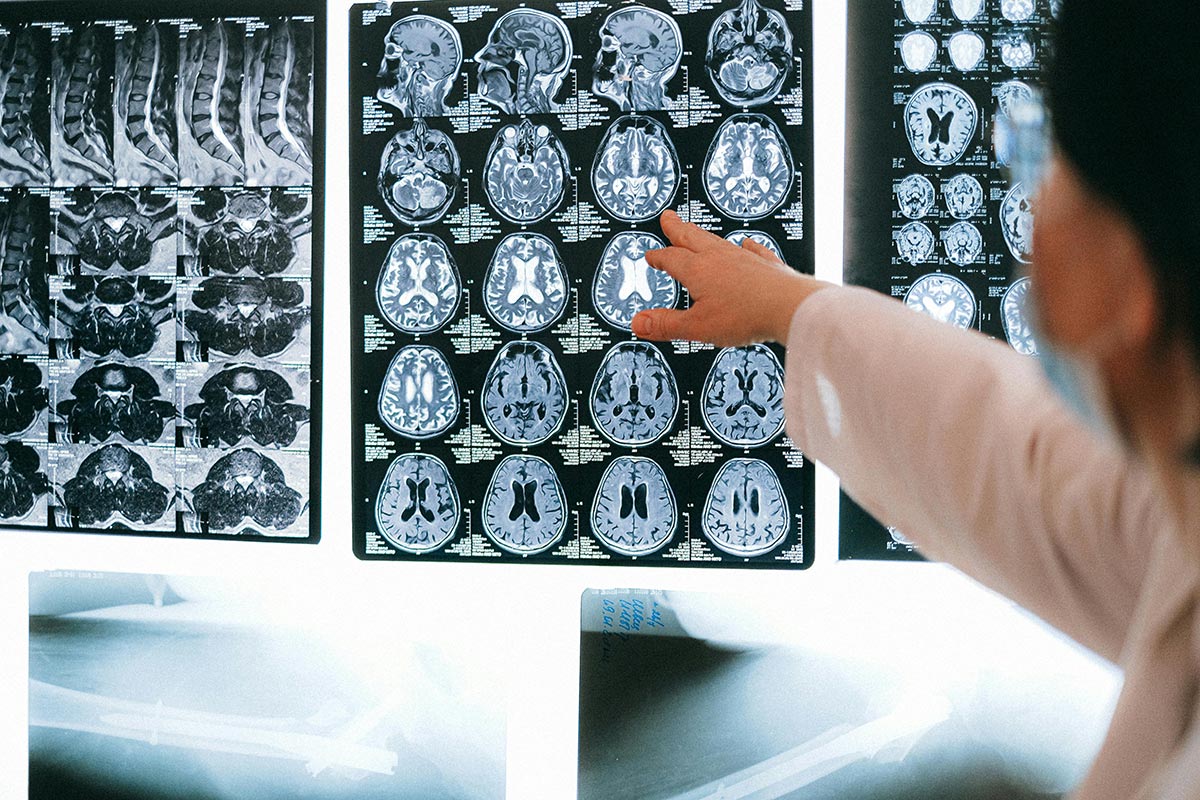
Exploring Influences
Drug use tendencies in individuals are shaped by a mixture of biological, environmental, and developmental factors. As a complex disease, drug addiction involves factors that intertwine at various levels, influencing individuals differently. This article delves into these factors, providing insights into the multifaceted nature of drug abuse and addiction, particularly among adolescents and young adults. By understanding these influences, we can better address prevention, treatment, and support strategies.
Defining Drug Abuse and Its Underpinnings

What is drug abuse?
Drug abuse, often interchangeably referred to as substance abuse, pertains to the harmful or hazardous use of psychoactive substances—this includes both illegal drugs and the misuse of prescription medications. The fallout from drug abuse can be severe, manifesting in health problems, impaired judgment, and various social or legal issues. When this trajectory escalates, it can lead to drug addiction, a more acute form of substance abuse defined as a chronic disease. This condition is characterized by compulsive drug-seeking behaviors despite the adverse consequences that arise, which are ultimately fueled by alterations in brain function.
Complex nature of drug addiction
The journey into drug addiction is complex and multifaceted, influenced by a combination of biological, psychological, and environmental factors. Genetic predisposition plays a significant role, accounting for approximately 40-60% of a person’s susceptibility to developing a substance use disorder. In addition to genetics, the role of adverse childhood experiences—such as trauma, abuse, or neglect—further complicates individual risk profiles.
Adolescents are particularly susceptible due to ongoing brain development, which affects judgment and self-control. They are often swayed by peer pressure, curiosity about drug effects, or the prospect of emotional escape, making the onset of drug use not just a personal choice but a pronounced reflection of their environment.
Factors contributing to drug use
Factors contributing to drug use are numerous and can be categorized into individual, family, and community influences. At the individual level, traits such as impulsivity or sensation-seeking behavior heighten the risk of substance use. In a familial context, having close relatives who misuse drugs increases one's vulnerability, showcasing the power of genetics as well as learned behaviors.
On a broader scale, community environments defined by poverty and limited access to supportive services can exacerbate substance use tendencies. Notably, the social-ecological model emphasizes the interconnectedness of these factors, illustrating how individual traits, peer influences, community context, and societal perceptions collectively shape drug use trajectories. Understanding these layers is crucial for developing effective prevention and intervention strategies that can disrupt the cycle of addiction and support individuals at risk.
Exploring the Causes of Drug Abuse

What are the primary causes of drug abuse?
Drug abuse can arise from a complex interplay of several factors. Genetic predisposition is significant, accounting for about 40% to 60% of the risk for developing substance use disorders. Individuals with a family history of addiction are often more susceptible due to inherited traits.
Environmental influences like peer pressure, family dynamics, and socioeconomic status are crucial in the initiation and escalation of drug use. For instance, adolescents often encounter social reinforcement mechanisms, putting them at a higher risk of substance use as they seek acceptance within their peer groups.
Mental health disorders amplify the risk of drug misuse. Conditions like depression, anxiety, or PTSD often lead individuals to use substances as a coping strategy. This creates a cyclical relationship that complicates both mental health and addiction, as untreated disorders can increase vulnerability to substance use, establishing a pattern of reliance on drugs.
Additionally, early exposure to drugs can permanently alter brain structure and function, particularly during critical developmental stages. Substances with high addictive potentials, such as stimulants and opioids, exacerbate risks due to their inherent characteristics and administration methods.
What factors most influence a person's drug use or non-use?
A person's decision to use or abstain from drugs is influenced by a variety of risk and protective factors. Key risk factors can include biological traits like impulsivity, psychological issues, socio-economic challenges, and adverse childhood experiences (ACEs), such as trauma or neglect.
Protective factors that promote non-use consist of supportive family relationships, strong community ties, and positive social norms. For example, children who grow up in an environment where drug use is openly discussed and discouraged tend to fare better in rejecting substances.
Effective prevention strategies should aim to reduce risk factors while bolstering protective influences. Data-driven approaches are crucial for understanding the dynamics of drug use and for tailoring interventions that address specific community needs. By focusing on both sides of the equation, we can create a comprehensive strategy to combat substance use effectively.
Biological Influences on Drug Use Tendencies

What factors influence the effects of drugs on an individual?
Individual responses to drugs are influenced by various factors including genetic makeup, age, body size, health status, and adherence to treatment regimens. Genetic differences, studied under pharmacogenetics, can affect drug metabolism and action, leading to variations in response among individuals.
Age significantly impacts drug effects, especially in infants and older adults who may metabolize drugs less effectively, necessitating careful dose adjustments. Additionally, interactions between drugs, foods, and underlying health conditions can alter medication effectiveness and safety, potentially leading to adverse outcomes.
Lastly, factors like tolerance, resistance to drugs, and the presence of other medications also play a critical role in shaping an individual's response to pharmacotherapy. This understanding is vital when addressing the complexities of drug addiction and developing effective treatment strategies.
Genetic Predispositions
Approximately 40-60% of a person's risk for developing substance use disorders can be attributed to genetic factors. Certain genetic variations, such as the OPRM1 polymorphism, have been associated with an increased vulnerability to addiction. This genetic predisposition works alongside environmental influences to determine one's overall risk for substance abuse.
Brain Chemistry and Development
Drugs impact the brain's reward circuitry, leading to the release of dopamine and feelings of euphoria. However, with repeated use, the brain compensates, reducing its dopamine response and increasing the need for the drug to achieve similar effects. Adolescents are particularly affected due to ongoing brain development, as the areas involved in judgment and impulse control are still maturing. This makes them more susceptible to risky behaviors like drug use.
Addiction Vulnerabilities
Factors such as childhood abuse, peer influences, and mental health issues can significantly increase susceptibility to addiction. Co-occurring mental health disorders, such as anxiety and depression, are common among those with substance use disorders. Unsurprisingly, untreated childhood conditions like ADHD heighten the risk of future substance abuse, emphasizing the importance of early intervention and supportive environments.
The Social-Ecological Model of Substance Use

Individual Level Influences
A person's individual characteristics greatly affect their susceptibility to substance use. Factors like mental health, trauma history, and personal traits such as impulsivity and sensation-seeking behavior can influence how they engage with substances. For example, individuals with untreated ADHD or underlying mental health conditions demonstrate increased risks of developing substance use disorders, highlighting the importance of early identification and intervention.
Interpersonal Relationships
The social circles individuals navigate are also crucial. Peer pressure is particularly potent among adolescents and young adults, where the desire to fit in can lead to increased substance initiation. Family dynamics play a significant role as well; parental involvement and attitudes towards substances can serve as either protective or risk factors. Strong family bonds and regular discussions about the dangers of drug use are protective measures that can mitigate risks stemming from negative peer influences.
Community and Societal Impacts
Community-level factors, including neighborhood characteristics, economic stability, and available resources, significantly affect substance use patterns. Communities with high poverty rates may lack adequate substance abuse resources, leading to increased drug availability and higher chances of addiction. Moreover, stigma around drug use can deter individuals from seeking help, further complicating recovery efforts. Initiatives that foster community engagement, improve health equity, and reduce stigma can create safer environments conducive to prevention and recovery.
| Factor Level | Individual Influences | Interpersonal Relationships | Community/Societal Impacts |
|---|---|---|---|
| Risk Factors | Mental health issues, impulsivity | Peer pressure, family history | Neighborhood poverty, stigma |
| Protective Factors | Resilience, self-efficacy | Family support, open communication | Community programs, health resources |
| Prevention Strategies | Early intervention, education | Family engagement | Supportive legislation, community action |
Cultural, Economic, and Healthcare Factors
Cultural Trends
Cultural norms and values play a critical role in shaping attitudes towards drug use. Societies that normalize substance use or portray it as a rite of passage can inadvertently increase usage patterns among youth. Media portrayal of drug use, including music and film, often glamorizes smoking or drinking, influencing adolescents to experiment with drugs.
Economic Conditions
Economic factors significantly influence drug addiction rates. High unemployment and poverty levels can lead to stress and hopelessness, prompting individuals to seek relief through substance use. Disadvantaged neighborhoods often lack access to educational and recreational resources, increasing the likelihood of turning to drugs as a coping mechanism. Socioeconomic instability can also strain family relationships, further heightening addiction risks.
Healthcare Access
Access to healthcare services, particularly mental health support, is crucial in addressing substance use tendencies. Communities with limited healthcare availability often see a higher prevalence of untreated mental health issues, which correlate with increased substance use disorders. Failure to receive timely interventions can hinder recovery and perpetuate cycles of addiction, demonstrating the need for equitable healthcare access.
Risk and Protective Factors in Adolescence
Adolescent Risk Factors
Adolescents face a myriad of risk factors that can lead to substance use and potential addiction. Peer pressure stands out, as teens are especially vulnerable to engaging in drug use to fit in with friends who may already be experimenting. Other significant contributors include:
- Early Aggressive Behavior: This type of behavior has been linked to later substance use.
- Low Parental Supervision: Inadequate oversight may allow easier access to substances.
- Academic Problems: Poor academic performance can lead to increased substance use as a coping mechanism.
- Peer Substance Use: Having friends who use drugs strongly influences an individual’s choices.
Protective Measures
Despite these risks, certain protective factors can help mitigate the likelihood of substance use. Effective measures include:
- Strong Parental Bonds: Close relationships with caregivers can deter drug use.
- Regular Conversations about Drugs: Open dialogues between parents and children regarding the consequences of drug use foster awareness.
- Community Engagement: Involvement in activities that promote healthy lifestyle choices can significantly reduce risk.
Early Intervention
The importance of early intervention cannot be understated. Addressing mental health issues like untreated ADHD or anxiety at a young age can reduce the risk of developing substance use disorders later. Programs that promote resilience, enhance self-esteem, and educate about the dangers of drug use are crucial in creating a supportive environment for adolescents. These measures collectively foster protective factors that can combat the pervasive influence of risk behaviors.
Mental Health and Drug Use
Co-occurring mental health disorders
There is a notable connection between mental health disorders and drug use. Studies indicate that over 60% of adolescents undergoing treatment for substance use also exhibit symptoms of mental health issues, such as anxiety or depression. This comorbidity complicates treatment and recovery, reinforcing the need for integrated approaches that address both mental health and substance use in therapeutic settings.
Coping mechanisms and risks
Individuals often turn to drugs as a coping mechanism for stress, anxiety, or depression. The allure of short-term relief can lead to a problematic pattern of use that escalates into addiction. Stress and trauma, particularly experiences of physical or sexual abuse, can trigger substance use as a means of managing emotional pain. Such scenarios reveal how external pressures can lead to unhealthy coping strategies that exacerbate the cycle of addiction.
Trauma and stress impacts
The impact of trauma on substance use cannot be overstated. Adverse childhood experiences (ACEs) such as neglect or abuse significantly increase the chances of developing substance use disorders later in life. Moreover, individuals from disadvantaged neighborhoods, where the prevalence of trauma is often higher, face compounded risks, making the understanding of trauma's role critical in prevention and intervention strategies.
Solutions and Interventions for Drug Addiction

What are the solutions for drug addiction problems?
Addressing drug addiction requires a holistic and comprehensive treatment approach. The first essential step is acknowledging the addiction and seeking appropriate help. Many solutions involve combining various modalities, including medications, behavioral therapies, and lifestyle changes.
Comprehensive Treatment Approaches
Effective treatment plans often integrate both medical and therapeutic strategies. Medications may be prescribed to manage withdrawal symptoms, alleviate cravings, and assist in restoring normal brain functions altered by drug use. Behavioral therapies are equally crucial, equipping individuals with coping strategies and skills to deal with triggers and stressors that may lead to substance use.
Behavioral Therapies
- Cognitive Behavioral Therapy (CBT): Focuses on changing negative thought patterns and behaviors.
- Motivational Interviewing: Enhances motivation to change and commit to recovery.
- Contingency Management: Rewards positive behaviors related to sobriety.
Support Systems
Ongoing support plays a vital role in long-term recovery success. Family support, friends, and recovery groups are invaluable resources, providing encouragement and accountability during the recovery journey. Many individuals benefit from participation in mutual support groups like Narcotics Anonymous.
Long-term follow-up care is critical for maintaining sobriety. It helps individuals navigate potential triggers and relapses, fostering resilience in the face of challenges. A collaborative approach that includes the individual, their support network, and healthcare professionals maximizes the chances of sustained recovery.
The Impact of Environmental and Social Factors
Community Support
Community support plays a crucial role in mitigating the risk of substance use. Access to mentors, youth programs, and positive role models can create environments where healthy behaviors are encouraged. A supportive community can offer resources such as counseling and safe spaces for youth to engage in productive activities rather than turning to drugs.
Socioeconomic Status
Socioeconomic status (SES) significantly influences substance use patterns. Individuals from lower SES backgrounds may face increased stressors including poverty, lack of education, and fewer opportunities. These factors often correlate with higher substance use rates due to limited access to health resources and increased exposure to drugs in their environments.
Peer Influence
Peer influence is a powerful determinant of substance use, especially during adolescence. Teens are more likely to experiment with drugs if their friends partake in such behaviors. The desire to fit in or gain acceptance within peer groups often overrides personal judgments about the risks involved in drug use. Peer pressure acts as both a risk and a protective factor, depending on the attitudes and behaviors of the group.
Addressing Drug Use Tendencies
Understanding the multifaceted nature of drug use tendencies underscores the importance of a comprehensive approach to prevention and treatment. By addressing biological, environmental, and social influences, effective strategies can be developed to mitigate risk factors and strengthen protective measures. A collaborative effort involving families, communities, healthcare providers, and policymakers is essential to combat the complex challenges of drug abuse and addiction, ultimately leading to healthier individuals and societies.
References
- Understanding Drug Use and Addiction DrugFacts
- Family, Individual, and Other Risk Factors Contributing to Risk of ...
- Determinants of Health: Substance Use - MN Dept. of Health
- Risk and protective factors of drug abuse among adolescents
- Risk and Protective Factors | Youth.gov
- Why Do Teens Use Drugs? | Get Smart About Drugs
- Substance Use Disorder (SUD): Symptoms & Treatment
.svg)





